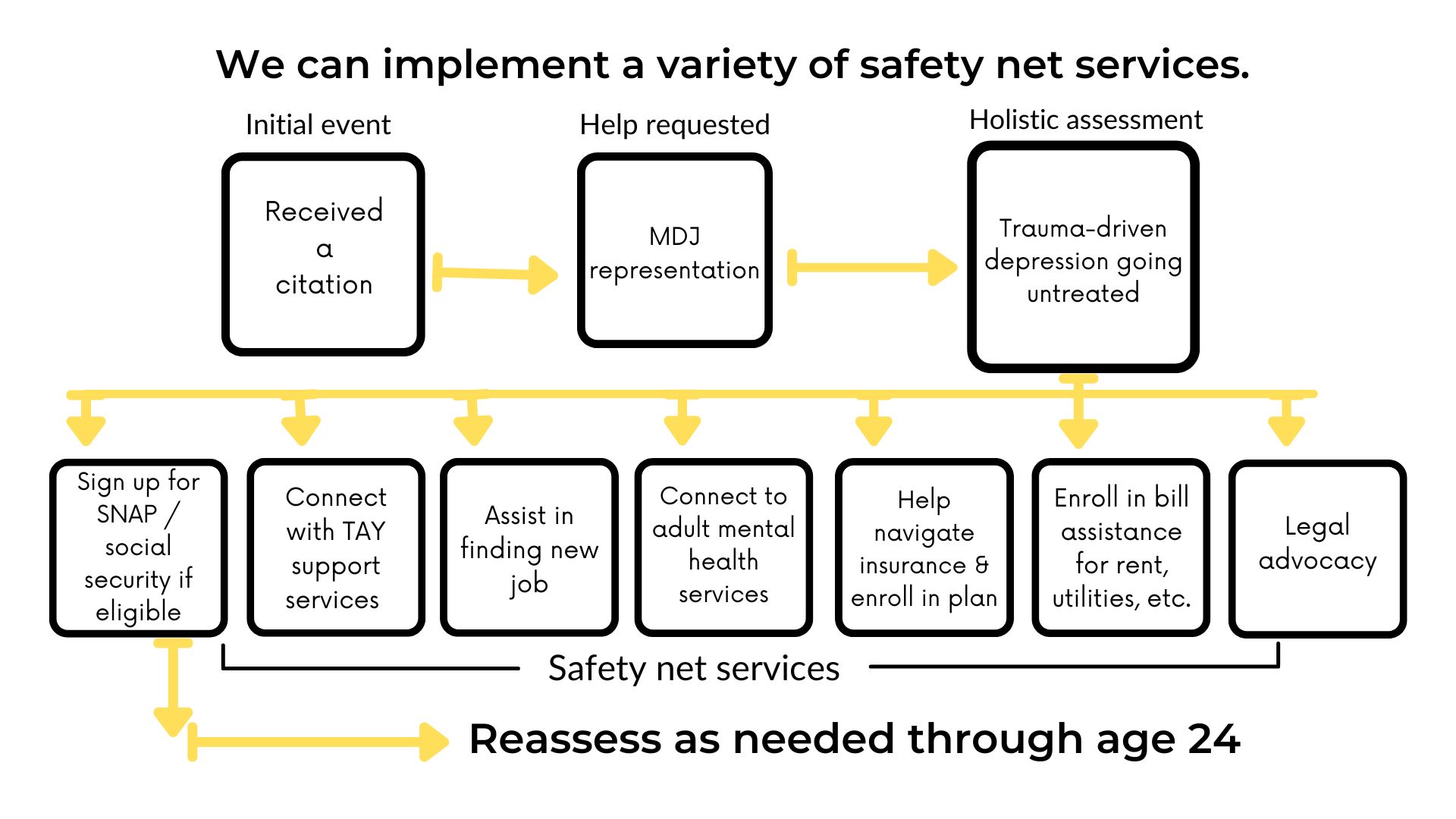A specially designed model for transition age youth 14-24.

This logic model was created to illustrate KidsVoice's approach to addressing the needs of transition age youth to ensure a smooth, stable shift from the care system to adulthood.
Older youth services may begin when a youth self-refers themselves for assistance with an initial event, through KidsVoice outreach, or a third-party referral, such as from the Department of Human Services or a service provider.
Initial Events

These initial events generally fall into one of four categories:
-
Health, Behavioral Health & Disability
-
Social Justice
-
Housing, Public Benefits & Food Insecurity
-
Employment & Education

While addressing the initial event, KidsVoice also assesses and addresses the youth's needs in all four areas.
Breakdown of Services

Health, Behavioral Health & Disability
- Medical coverage & insurance
- Mental health treatment
- Medical-legal partnership
- Disability advocacy
- Intellectual disability & autism waivers
- Adult guardianships
- Two-generation advocacy

Social Justice
- MDJ summary offense representation
- Juvenile record expungement
- Credit repair
- Driver's license advocacy
- Two-generation advocacy

Housing, Public Benefits & Food Insecurity
- Housing advocacy
- Social Security & public benefits
- Connecting clients to food
- Connecting clients to community services
- Two-generation advocacy

Employment & Education
- Education advocacy
- Special education advocacy
- Education intake assessment
- Workforce development
- Two-generation advocacy
Preventing Setbacks: An Applied Model
By addressing all four problem areas above with our holistic assessment, we can help clients avoid the most common setbacks faced by former dependent youth not receiving KidsVoice services: homelessness, 4+ ER visits per year, mental health hospitalizations, removal of children, and incarcerations.

Scenario #1
Michael, a 21-year-old former client with a history of significant trauma, received a disorderly conduct charge while out with friends. He was upset at the time over the loss of his job, from which he was fired due to too many call-outs because of untreated depression. Some of the setbacks he could face without intervention include debt, homelessness, a mental health crisis, self-medication, incarceration or hospitalizations.

Examples of Setbacks Avoided
- Service: Bill assistance, social security, SNAP, public benefits, etc.
Avoids: Debt and collections; loss of housing; food instability - Service: MDJ representation
Avoids: Incarceration; failed background checks for jobs and housing - Service: Adult mental health services, insurance
Avoids: Self-medication; mental health crisis; incarceration; hospitalizations - Service: Job assistance
Avoids: Loss of housing; food instability
If a child is present, all of the above setbacks could lead to the removal of the child.
Applying our Model to Two-Generation Advocacy

Scenario #2
Samantha, a 23-year-old former client, has received a final warning from her landlord for overdue rent. KidsVoice's holistic assessment finds that she is a single parent with a 3-year-old with developmental delays. Samantha works 25 hours per week at $8 an hour and cannot afford child care. Her job prospects are limited due to a juvenile record, but she would like to go into a trade program.

Impact

Impact Outlook Through 2026
Present: Local application to other youth and adults
2024-2025: National replication
2024-2025: Universal representation in MDJ cases
2025-2026: Community justice alternative to MDJ summary offenses
You can download a PDF printout of the logic model here.
Stay Informed
Never miss an update! Sign up for the KidsVoice newsletter to learn about upcoming events, announcements, donor and volunteer opportunities, and current initiatives.

